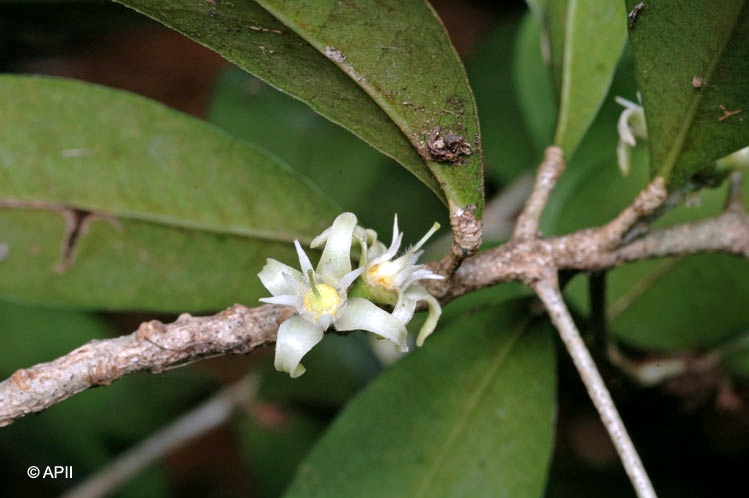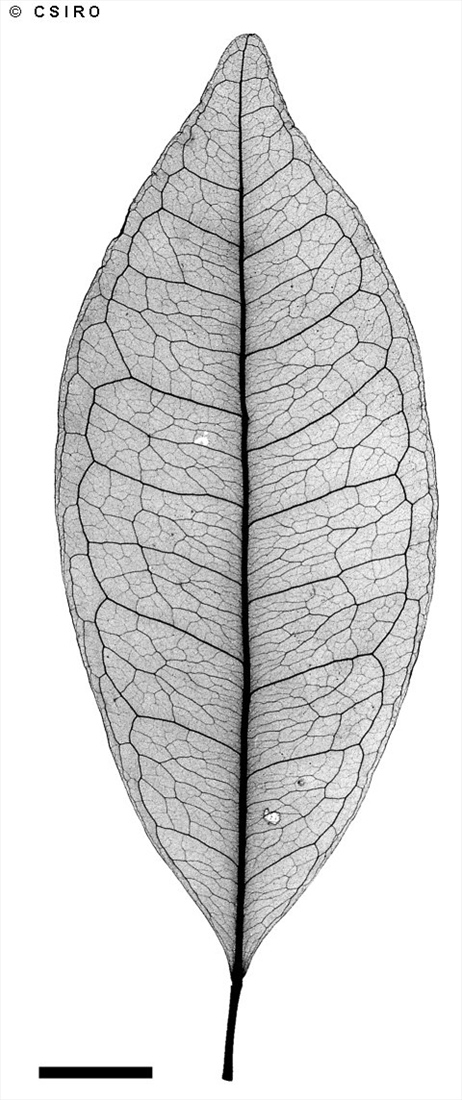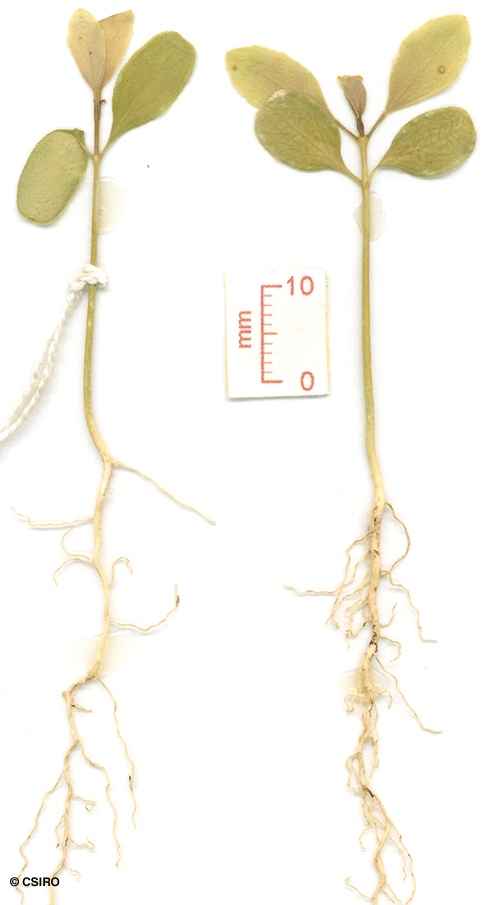Australian Tropical Rainforest Plants - Online edition
Acronychia parviflora C.T.White





White, C.T. (1933) Contributions from the Arnold Arboretum of Harvard University 4: 51. Type: Queensland, East Malanda, Glen Allyn, Atherton Tableland, 22 Sept. 1929, S. F. Kajewski 1214; holo: A?.
Usually flowers and fruits as a shrub 1-4 m tall.
Leaf blades about 3.5-9.5 x 1.3-4.5 cm. Lateral veins raised on the upper surface and forming distinct loops inside the blade margin. Petiole channelled on the upper surface and clothed in short brownish hairs.
Inflorescence about 0.6-0.8 cm long. Flowers sessile or with a very short pedicel, less than 1 mm long. Flowers about 3-3.5 mm long. Petals with an inflexed hook at the apex. Stamens eight, dimorphic, four long ones alternating with the petals and four short ones opposite the petals. Filaments ciliate at least on the basal half. Pollen white. Disk glabrous, well developed. Ovary mainly glabrous except for a few hairs at the apex. Stigma green.
Cotyledons obovate, about 7-13 x 5-8 mm, oil dots mainly near the crenate margins, venation difficult to discern. First pair of leaves with toothed margins, petiole articulate at its junction with the leaf blade. Hypocotyl and stem 4-angled. At the tenth leaf stage: crushed leaves emit a citrus (Citrus spp.) odour. Leaf blade elliptic, apex acute to acuminate, base cuneate to attenuate. Petiole articulate at its junction with the leaf blade. Lateral veins forming loops inside the blade margin. Midrib raised on the upper surface of the leaf blade. Nectaries about 8-10, normally present on the underside of the leaf blade between the base and the apex. Oil dots numerous, closely spaced. Seed germination time 78 to 339 days.
Endemic to NEQ. Altitudinal range from 200-1600 m. Grows as an understory plant in well developed undisturbed upland and mountain rain forest.





